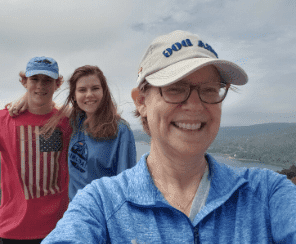Easter Sunday – The Empty Tomb: Fear and Promise

Easter Sunday – The Empty Tomb: Fear and Promise
John 20:1-9 | Easter, Year B
The Empty Tomb: Fear and Promise
No one saw the actual resurrection. Mary and the two disciples saw evidence at the tomb, but no one on earth saw God raise Jesus from the dead. In forty days, they will physically watch as Jesus ascends into heaven. But they had not actually seen the miracle that first Easter weekend. So, the disciples did what we would do, they assumed the worst. Grave robbers. Everyone was worried about grave robbers.
The Romans worried that if Jesus’s followers removed His body from the tomb, people might claim the impossible, that Jesus had indeed “rise(n) from the dead” (Mark 8:31). If that happened, His death could increase His following and continue to cause the Romans headaches.
Jesus’s followers knew the Romans did not want Jesus’s tomb to become a shrine for His followers. The Romans feared large crowds gathered to pay their respects could create a further upwelling of support for this Man. Joseph of Arimathea’s offer of a tomb for Jesus’s body may have disrupted the Roman plan to discard His body anonymously and be done with the problem. Further, if they could manage to get rid of the body, the disciples wouldn’t be able to show Jesus their final respects.
When Mary got to the tomb that first Easter morning, it looked like the thing most feared by all sides had happened. The tomb was empty.
I know I struggle with the same issues. Rather than seeing the promises inherent in the empty tomb, I often only see empty space. Fear can grip me, just like it gripped Mary Magdalene when she ran to get Peter and the other disciple. Mary hadn’t even entered the tomb yet. She had only seen the rock, moved from where it should have been. What she didn’t yet grasp is that “where the rock should have been” is a human construct, and Jesus had moved wholly into the realm of the divine.
The disciples had been through so much in the past week. They must have hoped the worst was over. To discover the body was gone was to continue the nightmare. When Peter sees the burial cloths, scripture says, “he saw and believed” (v. 8). But what does Peter believe? That Jesus rose from the dead? Or after seeing the evidence, does Peter finally believe Mary, that the tomb is indeed empty, that the nightmare is still unfolding?
Isn’t that us? We look to verify what we believe to be true. It takes a lot to make us pivot to another way of thinking. That first Easter morning was not a time of egg hunts and ham lunches. It would lead to joy and eternal life, but that morning was full of confusion and fear. The empty tomb, the seemingly blank space where God is at work, is a mystery to us too. But, as God shows us repeatedly, it’s a mystery fully worth immersing in. It’s also one we will never be able to solve this side of heaven.


